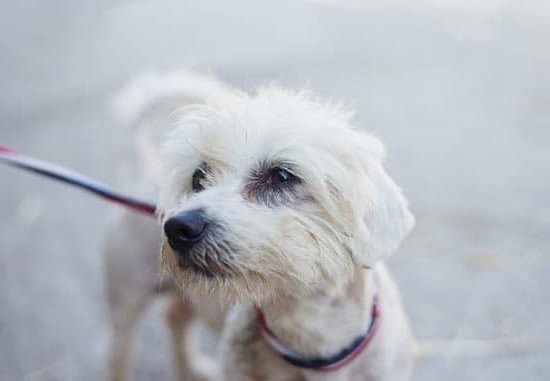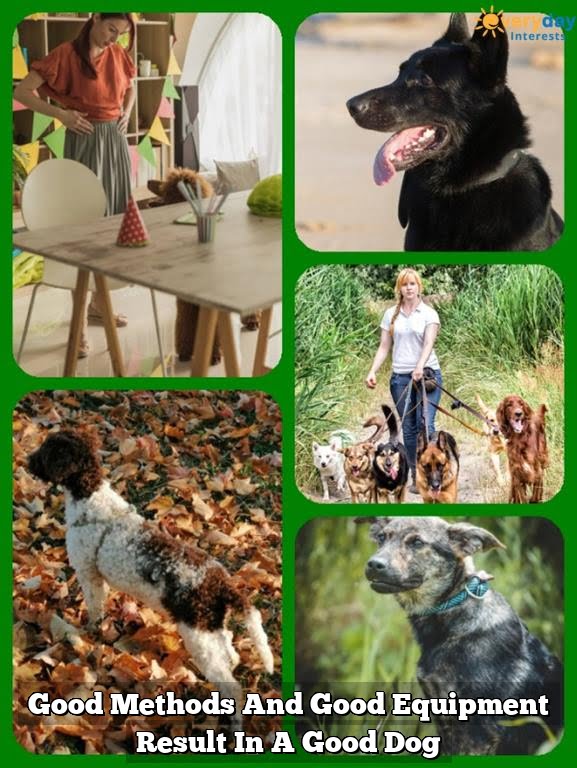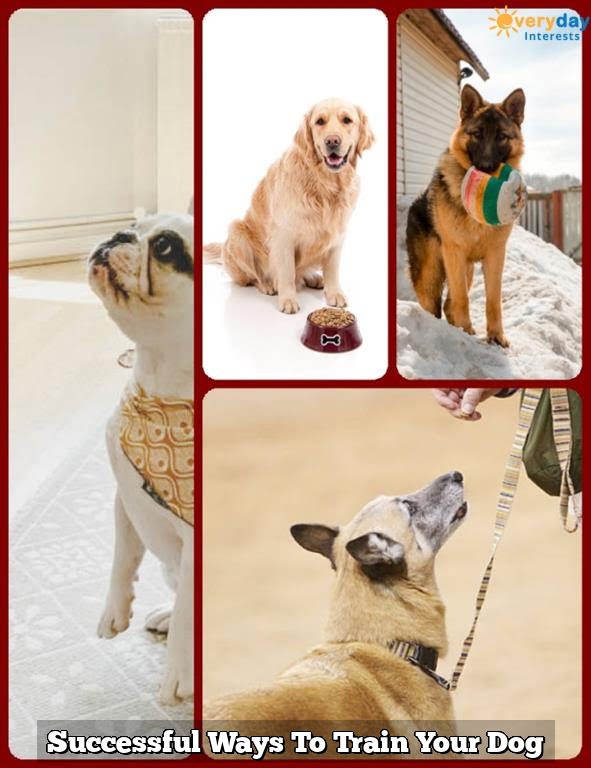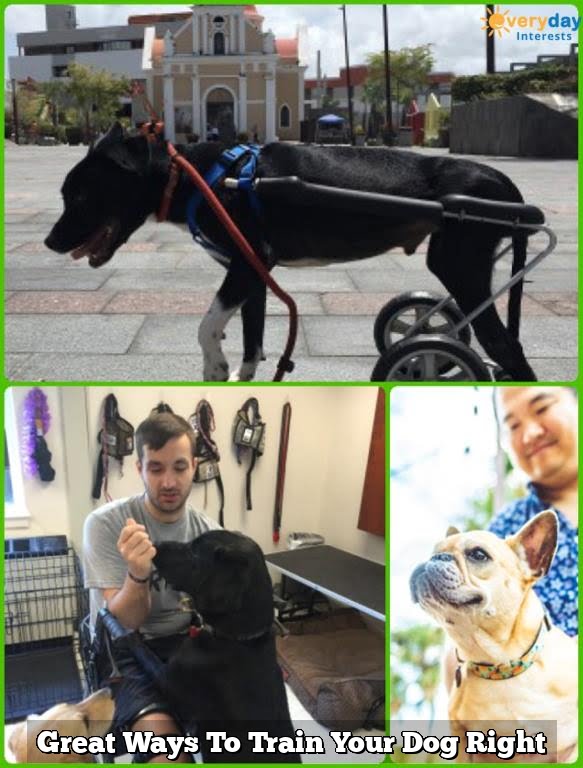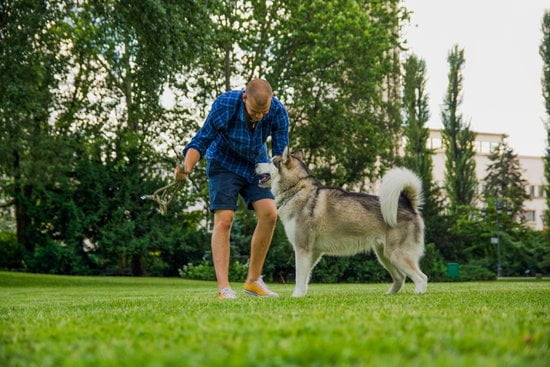Introduction
Training a dog is a great way to bond with them, provide them with structure and discipline, and to help teach them how to become well-behaved companions. It is also important to remember that every dog will have their own unique personality, so there are many different ways to train them. Here are several tips for getting the most out of training your pup:
1. Have realistic expectations of your pup’s progress in training: Even if you have trained other dogs from the same breed or family, each new dog may possess different characteristics, traits, and quirks that make learning different for them. It’s important to be patient with your dog and adjust your expectations accordingly.
2. Use positive reinforcement when teaching new behaviors: Even if you think positive reinforcement takes too much time or energy, it has been proven as one of the most effective ways to teach a dog something new while also building trust between you and your pup. Be sure to use treats as rewards when appropriate but don’t overdo it — otherwise the pup will begin to expect rewards every time they learn a new behavior. You can also use verbal praises whenever possible (e.g., saying “good boy/girl” after successful commands).
3. Establish rules that are consistent: Dogs thrive on routine and consistency; therefore, they do best when they know exactly what is expected of them at all times. Make sure every individual interacting with your pup follows the same rules — this helps cut down any confusion and sets up a clear expectation for obedience from your furry friend!
4. Take breaks when necessary: As with any form of learning, it’s essential to understand when you should take breaks from training sessions in order for both yourself and your pup not to get overwhelmed or stressed out about their performance or successes/failures associated with their efforts. Intermittent breaks throughout a single session are just as important as scheduling an uninterrupted period away from exercises in between training sessions (i.e., taking long walks after sessions).
5. Consult an expert: If you feel overwhelmed by the process of providing adequate training for your fur baby or would like some extra advice tailored towards specific scenarios associated with raising and training your particular kind/breed of puppy/dog, consider seeking out professionals who specialize in canine behavior such as clicker trainers or agility instructors! These professionals will be able to give valuable tips on how best to approach various exercises so that both you and Fido get the most out of each session!
Best Practices for Teaching Your Dog
Establish a Clear Routine
Dogs like structure and predictability. Establishing a routine for your dog from the beginning will help ensure that your pup knows what is expected of them. Providing consistency will make it easier for them to understand your behaviors, expectations and commands.
Make Training Fun
Dogs learn best when they’re having fun! Training should be an enjoyable experience for both you and your pup, so make sure to incorporate plenty of positive reinforcement, such as treats or verbal praise, into each session.
Be Patient and Consistent
Training a dog takes patience, so don’t rush it. Trying to teach too many commands or skills at once can be overwhelming for your pup, causing confusion and mistrust in the training process. Re-enforce learned behaviors more frequently until they are well established before looking to move onto more difficult tasks.
Break Down Big Tasks into Smaller Ones
When teaching something complicated or time consuming such as trick training or house training, break down tasks into smaller steps that are easier for the dog to comprehend and remember. Doing this makes tasks less daunting for the pup and creates success faster with each key milestone achieved along the way.
Creating Positive Habits
Training a dog can take patience and consistency, but when done correctly, it can be incredibly rewarding for both the owner and the animal. Good training practices are based on positive reinforcement and involve using rewards or praise to encourage desired behaviors. Positive reinforcement will also help your dog connect his behavior with the reward or praise, making sure he continues to do that specific behavior in the future to get what he wants. It’s important to give rewards/praise immediately after a desired behavior as this will help reinforce the action in your furry friend’s brain and make it much easier than trying to program him later down the line.
Other good methods for training a dog include proper timing for corrections (waiting until after an undesired behavior), using distraction techniques such as tug-of-war games, clicker training, or demonstrating commands and expecting your pup to mimic them (even when the command is new). Additionally, don’t forget other everyday habits that you can use while teaching a new command: limit treats given at one time; increase distance between you and your pup while practicing commands; ensure commands remain consistent without fail; practice patience while correcting undesired behaviors; have fun with your pup – they’ll love nothing more than learning with their human. With practice and dedication, you can create desirable habits in your furry family member that will last a lifetime!
Tools and Techniques for Keeping Dogs Engaged
Positive reinforcement and reward-based training has long been one of the most popular and successful methods of dog training. The basis of this method is to reward and encourage desired behaviours while ignoring or redirecting undesired ones. This approach could involve verbal praise and food rewards, such as treats, when the dog carries out a task correctly. Working in short bursts and building on previous successes will help keep your dog motivated by providing small but frequent rewards for desired behaviour.
In addition to positive reinforcement, other tools can be used to help engage dogs in their training sessions, such as clickers, squeaky toys, or a flirt pole (a pole with a rag attached). When introducing these tools into the training session, be sure to pair them with positive reinforcement – if the clicker clicker is paired with no reward or punishment then it will become meaningless over time. Also, be sure to keep sessions short; 15 minutes at a time may be sufficient for younger dogs but adults should strive for longer. Finally, you can also use commands such as stay or sit in order to create structure during playtime activities which can help teach better manners. By gradually teaching basic commands during these fun activities, you can keep your canine companion engaged while ensuring they are receiving proper behavioural instruction as well.
Developing Effective Routines and Rules
Developing effective routines and rules is an essential part of good dog training. Creating a set of consistent rules and expectations for your pup teaches him what behavior is accepted within your home. This can include everyday tasks like house-training, going out for walks and refraining from jumping on visitors when they arrive. Owners should also set clear expectations about where their dogs can sleep, which areas of the furniture they’re allowed on, where they should potty, and what toys are theirs to play with. Establishing these boundaries offers a sense of safety and security for both you and your pup.
Along with setting consistent routines and expectations, taking time each day to engage in interactive activities like playing fetch or tug-of-war will help build a strong bond between you and your pet. Teaching basic commands such as sit or stay reinforces those routines while offering mental stimulation for the pup that allows him to practice his skills in a fun way. Making sure owners’ praise positive behavior rather than punishing negative behavior will also reinforce positive reinforcement methods while avoiding negative feelings that could occur with stronger corrections. Providing plenty of affection and regular cuddles will help form an unmederstood language between you and your pet that further enhances the overall relationship between the two of you. And lastly, enrolling in puppy classes or signing up for private obedience classes can offer great advice from experienced trainers while building socialization skills that allow pups to engage with other animals safely.
Effectively Bonding New Dogs with Established Dogs
A great way to help a new dog bond with an established dog is to create situations where controlled, positive contact between the two dogs can occur. Ideally, those contacts should be short and unrelated to the presence of food or toys. Take them on walks together or allow them to explore a safe space side by side. Established dogs should also have more freedom than the new arrival during playtimes and should not need scolding when they become possessive of their toys or food if the new dog tries to engage in these activities as well. Depending on the breeds, size and personality of the dogs, it may be best for certain exertions and meetings between them to take place behind a barrier such as a fence that allows some level of interaction without physical contact. Providing consistent supervision during all interactions will ensure nothing gets out of hand and will help build trust among the canines too.
Mastering the Fundamentals of Dog Control
The fundamentals of dog control refers to a method of training that teaches owners how to effectively develop relationships with their canine companions. It involves teaching essential obedience commands such as sit, stay, come, and heel, in addition to learning appropriate communication techniques for obedience practice. Proper basics for dog control also include establishing a regular schedule for feeding and potty breaks; identifying basic signals (barking, panting, etc.) and body language that indicate a need for rest or reassurance; reinforcing positive behavior through rewards (treats, verbal praise); and implementing proper leash control during walks and other outdoor activities. By developing an understanding of these fundamental elements of ownership – from basic obedience commands to knowing when your canine companion needs attention or rest – you can ensure an enjoyable experience together on both sides of the leash.
Fun Activities and Games for Dogs
Dogs need plenty of exercise and stimulation to stay healthy, both physically and mentally. To keep your dog engaged and happy, you should make sure to incorporate plenty of fun activities and games into their daily routine. Some great ways to train dogs through play include hide-and-seek, fetch, agility training, retrieving toys or other items, canine sports such as flyball or disc dog competitions; even basic obedience commands like ‘sit’ or ‘stay’. You can also use treats or reward games to motivate your pup during a training session. If you’re feeling creative, feel free to come up with new game ideas that will suit your pooch’s personality! Other fun ways to engage your pup in physical activity include swimming (a great option for larger breeds), going on long walks or hikes together; even playing with other friendly pups at a nearby park. A tired pup is a happy pup! With plenty of exercise and mental stimulation each day, your furry companion will remain happy and content.
Addressing Common Housebreaking Challenges
When housebreaking a dog, it is important to construct a safe and comfortable potty spot in the yard and bring them outside every few hours. It is also important to start with short sessions at first and work up from there as dogs become accustomed to the routine. If your pup does have an accident inside the house, it is important not to punish them or make them think of elimination as something negative as this can lead to behavior issues down the road. Instead, distract and redirect their energy towards more acceptable behaviors like chewing toys or playing fetch. If possible, use positive reinforcement methods like offering treats when they pee outside or even talking to them in a positive manner during potty training sessions. In some cases puppy pads may be helpful for indoor potty training but never leave them on longer than necessary; eventually you want your pup going outdoors! Patience, consistency, and positive reinforcement are key when trying to train your pup good elimination habits.
Identifying and Resolving Unwanted Dog Behaviors
One of the best ways to train dogs is by identifying and then resolving any unwanted behaviors. This may mean teaching your pet commands such as ‘sit’, ‘stay’ and ‘come’ as well as discouraging behaviors such as jumping up on people, chasing cars or barking excessively. The key is to use positive reinforcement based training techniques and keep sessions short, enjoyable and rewarding for both you and your dog. During these training sessions, give clear instructions followed by consistent reward-based rewards, such as verbal praise, small treats or toys. Using gentle corrections if necessary will also help reinforce what is expected from your dog while avoiding any harsh punishments that could traumatise them. Patience is essential when dealing with any new behavior from your pet – repetition in a variety of settings will be beneficial in helping them understand and remember the desired actions.
Conclusion
Training a dog can be an incredibly rewarding experience as it strengthens the bond of trust between human and canine. It’s also important to understand that mastering these skills takes time and patience. Like any skill, learning how to properly train a dog requires practice. Training should always be done with positive reinforcement and consistency, encouraging obedience in a calm and careful manner. Exploring different training styles, finding the right treats, rewards, toys and games that animate your pup is crucial to successful training. Achieving happy results will take time, but ultimately, when you see the joy in your pup’s eyes after they have mastered a new trick or command – it will be worth it! Most importantly, remember to go at your own pace and enjoy each moment of progress since the rewards far outweigh any challenge you may face along the way. Training a dog doesn’t only ensure an obedient pet – it shows them love and demonstrates just how much fun learning together can be!

Welcome to the blog! I am a professional dog trainer and have been working with dogs for many years. In this blog, I will be discussing various topics related to dog training, including tips, tricks, and advice. I hope you find this information helpful and informative. Thanks for reading!

